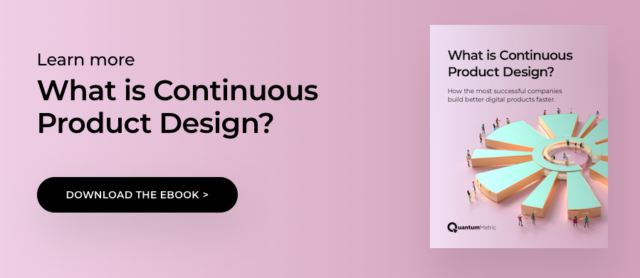Going beyond mobile first: Creating a great digital experience for today’s customers.

This post was guest authored by Lauren Lynn as part of our series with thought leaders on Continuous Product Design.
Lauren Lynn is a product leader, most recently at Under Armour. She has over 7 years of experience driving mobile-first solutions rooted in creative strategy and digital innovations. When not focused on making mobile experiences better, Lauren likes to unplug by exploring local Austin favorites from breweries to nature hikes.
The mobile-first trend.
There are more than 3.5 billion smartphone users in the world, yet most companies are still focusing on the desktop experience. In the wake of Covid-19, mobile adoption trends have advanced 2 to 3 years* in just 7 months, speeding up the transition to a mobile-first, always “on” world. And customer expectations have never been higher.
Despite the mobile-first trend, many companies have continued to spend countless hours and resources serving a foundational digital experience on desktop without considering mobile, where most of their customers live. In today’s world, if you haven’t shifted to a mobile-first mindset, you’re doing a disservice not just to your business, but to your potential customer base as well.
Make a good first impression with mobile web.
When it comes to mobile web experiences, first impressions are everything. Speed and performance are crucial to ensuring that customers benefit from the digital experience by accomplishing what they set out to do.
How often do you wait longer than 3 or 4 seconds for a mobile browser page to load? When a website load time is longer than 2 seconds, you probably give up and shortly thereafter return to your Google search results to peruse other options.
Have you ever visited a product page on Amazon and thought, “Wow, look at that clean formatting and clutter-free design?” Again, probably not, but subconsciously you may have been thinking about how easy it was to navigate from page to page and find what you were looking for in a matter of seconds.
Consumers spent over 1.6 trillion hours on their mobile devices in the first half of 2020, a 20% increase from the same time period in 2019. The statistics are staggering, and any company that is not prioritizing a mobile-first mentality is heading for trouble. The companies that continue to focus on desktop experience will soon face an uphill battle to meet consumers’ demands, especially as a mobile-first standard is what users expect from any handheld experience.
Driving value proposition with a mobile app.
Once you’ve impressed your prospective customer with a speedy mobile site, there’s an opportunity to connect even further with users by expanding your company’s digital portfolio to include a mobile app.
Think beyond the mobile site session. Think beyond speed and performance.
Instead, hone in on the differentiators and value proposition of why someone should take the time to devote space to your brand on their smartphone or tablet.
Got your customer to download your mobile app? Great! Now you can continue to reinforce the app’s inherent value with push notifications and curated experiences that drive lifetime value and brand loyalty.
Taking a data-driven design approach.
As a product leader in the mobile app space, I’m always thinking about how to build loyalty and value-driving experience while addressing incoming bugs and defects–it’s a balancing act. Determining the potential impact of each bug can be time consuming. Teams must dig through troves of data to locate costly errors and align on priorities.
It’s pretty common for teams to get caught up with a bug that on the surface appears to be a serious problem, but ultimately impacts a very small number of users. This is why I’ve been a huge advocate of Quantum Metric. Not only does the platform capture user errors and provide mobile app session replays, but it also estimates the potential revenue impact of each issue or error.
Quantum Metric’s opportunity analysis democratizes data and empowers teams to make faster and smarter data-driven decisions. Without this, making these decisions would require going through analytics or hours of data digging.
With Quantum Metric, product leaders can shift the balance of power back to enhancing their app’s user experience with retention-driving features and building that loyal user base.
*https://www.appannie.com/en/insights/market-data/covid19-consumer-behavior-mobile/








